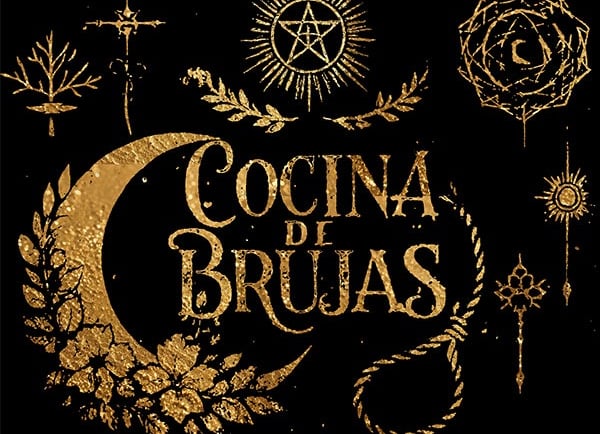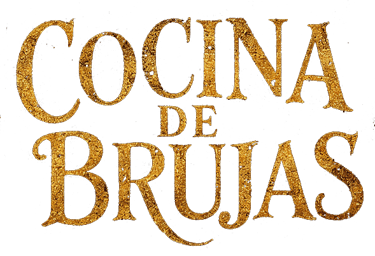Happy Holidays!
Ever wonder why we have Christmas trees or Easter bunnies? The answer lies in a fascinating history of cultural absorption. This post uncovers how the early Christian church didn't erase older faiths but cleverly repurposed their most sacred festivals, blending ancient rituals with new meaning. Dive into the history of syncretism and rediscover the origin stories layered within our favorite holidays.


Syncretism and Subversion: A Report on Pagan Holidays and Beliefs Co-opted by Christianity
Introduction: The Strategy of Cultural Absorption
The rise of Christianity across Europe was not a simple process of replacing one belief system with another. It was often a strategic and gradual absorption, where the new faith laid itself over the old like a blanket. Early church leaders, recognizing the deep cultural power of existing pagan traditions, adopted a policy of syncretism, which is the blending of different beliefs and practices. Pope Gregory the Great famously instructed his missionaries in 601 CE not to destroy pagan temples, but to convert them into churches, and to replace pagan festivals with celebrations for Christian martyrs.
This approach was pragmatic. It allowed converts to maintain their cultural calendar and familiar rituals, making the transition to the new religion less jarring. It was a process of reinterpretation, where the form of a tradition was kept, but its meaning was fundamentally altered. This report analyzes the most significant pagan holidays, deities, and beliefs that were assimilated into Christian practice across the Roman, Celtic, and Germanic worlds.
Part 1: The Winter Solstice, From Yule & Saturnalia to Christmas
The celebration of the birth of Jesus on December 25th is perhaps the most famous example of Christian syncretism. The Bible offers no date for Christ's birth, and early Christians did not celebrate it. The date was formally established centuries later, placed strategically to override the most popular pagan winter festivals.
Pagan Origins:
Roman Saturnalia: An ancient festival honoring the god Saturn, held from December 17th to 23rd. It was a time of feasting, gift-giving, gambling, and social inversion where masters served their slaves. It was a carnival of chaos and light in the darkest time of the year.
Sol Invictus (The Unconquered Sun): In the later Roman Empire, December 25th was the official "birthday" of the sun god, Sol Invictus. This date marked the point when the days began to lengthen after the winter solstice, the symbolic rebirth of the sun.
Germanic & Norse Yule: A 12-day festival celebrating the winter solstice. It involved feasting, drinking, and burning a Yule log to conquer the darkness and honor the gods, particularly Odin.
Christian Adaptation:
The birth of Jesus was reframed as the arrival of the "light of the world," directly competing with the "rebirth of the sun" narrative. Jesus became the "true" unconquered sun.
Comparative Analysis of Co-opted Traditions:
Feasting and Merriment: The celebratory feasts of Saturnalia and Yule became Christmas dinners.
Gift-Giving: A central tradition of Saturnalia was directly carried over.
Evergreen Decorations: Pagans brought evergreen boughs, holly, and mistletoe indoors as magical symbols that life persisted even in the dead of winter. This was adapted to symbolize Christ's promise of eternal life.
Candles and Lights: Lighting candles to represent the sun's return was a common pagan practice. This was re-contextualized as representing the Star of Bethlehem and Jesus as the light of the world.
Part 2: The Spring Equinox, From Ostara to Easter
The resurrection of Jesus is the cornerstone of Christian faith, yet the name and symbols of its celebration are deeply rooted in pagan fertility festivals.
Pagan Origins:
Ostara/Eostre: The spring equinox was a time of universal celebration for the renewal of life. The Venerable Bede, an 8th-century Christian scholar, wrote that the name "Easter" derived from Eostre, a Germanic goddess of spring and dawn. While direct evidence for this goddess is thin (leading to some academic debate, fitting our 20% speculative criteria), the thematic link is undeniable. The festival celebrated the earth's reawakening.
Christian Adaptation:
The resurrection of Jesus was timed to coincide with Jewish Passover, which itself is tied to the lunar cycles of spring. This placed the Christian celebration of spiritual rebirth directly on top of the pagan celebration of earthly rebirth.
Comparative Analysis of Co-opted Traditions:
The Easter Bunny: Hares and rabbits were sacred animals to Eostre and other fertility deities due to their rapid and prolific breeding. They were potent symbols of new life and fertility. The "Easter Bunny" has no connection to the Christian narrative but is a clear holdover.
Easter Eggs: The egg is an ancient, cross-cultural symbol of new life, potential, and rebirth. Decorating and exchanging eggs was a common folk practice during spring festivals long before Christianity. It was adapted to symbolize the empty tomb of Jesus.
The Name Itself: The English "Easter" and German "Ostern" are believed to be direct linguistic descendants of the name of the goddess Eostre. In contrast, most other languages use a variation of the word Pascha, from the Hebrew for Passover (e.g., Pâques in French, Pascua in Spanish).
Part 3: The Harvest's End, From Samhain to All Saints' Day
The modern traditions of Halloween, All Saints' Day, and All Souls' Day are a direct Christianization of a powerful Celtic festival marking the transition into winter.
Pagan Origins:
Samhain: For the Celts, this festival (pronounced "sah-win") on October 31st was the most significant of the year. It marked the end of the harvest and the beginning of the "darker half" of the year. It was believed that on this night, the veil between the world of the living and the world of the dead was at its thinnest. Spirits of the ancestors could return, and other supernatural beings could cross over. It was a time for honoring the dead, divination, and protective bonfires.
Christian Adaptation:
In the 8th century, Pope Gregory III moved the Feast of All Saints (or All Hallows) from May to November 1st, directly onto the date following Samhain. This was followed by the establishment of All Souls' Day on November 2nd. The church essentially created a three-day observance to absorb and reframe the pagan focus on death and the supernatural.
Comparative Analysis of Co-opted Traditions:
Focus on the Dead: The Samhain tradition of honoring and interacting with the spirits of the dead was replaced by praying for the souls of the dead and venerating canonized saints.
Bonfires: The protective bonfires of Samhain, meant to ward off evil spirits and represent the sun, were repurposed as fires to honor the saints.
Costumes and Disguises: While modern trick-or-treating is a recent invention, the Samhain tradition of "guising," wearing costumes to imitate or hide from supernatural beings, is a likely precursor.
Part 4: Other Notable Syncretic Festivals
Beyond the "big three," several other holidays show clear signs of assimilation.
Imbolc and Candlemas (February 1-2): Imbolc was a Celtic festival celebrating the first signs of spring and honoring the goddess Brigid, associated with fire, poetry, and healing. The Christian festival of Candlemas, which involves the blessing of candles, was placed on the same date. The "fire" aspect of Brigid was transferred to the candles, symbolizing the presentation of the infant Jesus (the "light of the world") at the temple.
Litha and St. John's Day (June 21-24): The summer solstice, or Litha, was a major pagan fire festival celebrating the peak of the sun's power. The church placed the feast day of St. John the Baptist, the prophet who announced the coming of Jesus, on June 24th. The pagan tradition of lighting massive bonfires on the solstice was continued, but now they were called "St. John's Fires."
Part 5: Beyond Holidays - Co-opted Deities, Saints, and Symbols
The syncretism extended far beyond the calendar into the very structure of belief.
Saints as Successors: When Christianity moved into a new region, the local pagan gods and nature spirits did not simply vanish. Often, their attributes, sacred places (wells, groves, hills), and feast days were transferred to a Christian saint. The most striking example is St. Brigid of Kildare, whose stories and attributes are nearly identical to the powerful Celtic goddess Brigid. She became a Christian saint, allowing the Irish people to continue their devotion under a new name.
The "Dying and Rising God" Trope: While not a direct theft, the narrative of Jesus fit into a well-established mythological archetype in the ancient world. Deities like the Egyptian Osiris, the Greek Dionysus, and the Phrygian Attis all had stories involving death and a subsequent resurrection, often linked to the agricultural cycle. This pre-existing cultural concept provided a framework for gentiles to understand the story of Christ's resurrection.
Symbolism:
The Halo: The radiant halo used in Christian art to denote divinity is visually identical to the iconography used for the Roman sun god, Sol Invictus, and the Greek god Helios. It was a pre-existing symbol of solar power and divinity.
The Virgin Birth: The concept of a miraculous or divine birth from a virgin mother was not unique. The Egyptian god Horus was born of the virgin Isis, and the Greek god Perseus was born of the virgin Danaë (impregnated by Zeus in a shower of gold). This trope signified a hero or demigod's special status.
Conclusion: A Legacy of Layers
The idea that Christian holidays were "stolen" from pagans is emotionally charged but historically resonant. The process was a deliberate and highly successful strategy of cultural assimilation. By absorbing and reframing deeply loved traditions, the church eased its expansion and embedded itself into the very fabric of daily life. The result is that modern Christianity, particularly in its Western forms, is a layered faith. Beneath the Christian narrative of Christmas, Easter, and other holy days lies a much older story: one of sun worship, fertility rites, and a profound connection to the cycles of the natural world. Recognizing these layers does not diminish the Christian meaning for believers, but it provides a richer, more complex understanding of how these traditions came to be.

Cocina de Brujas
They Called it Heresy. We Call it Tuesday.
Follow us here
© 2025. All rights reserved.
Join the kindred who cross the veil to claim their power through ritual scent journeys. Be first to experience emerging magick, whispered offers, and stories that kindle the senses. Sign the Book.
We guard your information like a sacred secret. No spam. No third party sharing. Unsubscribe anytime.
